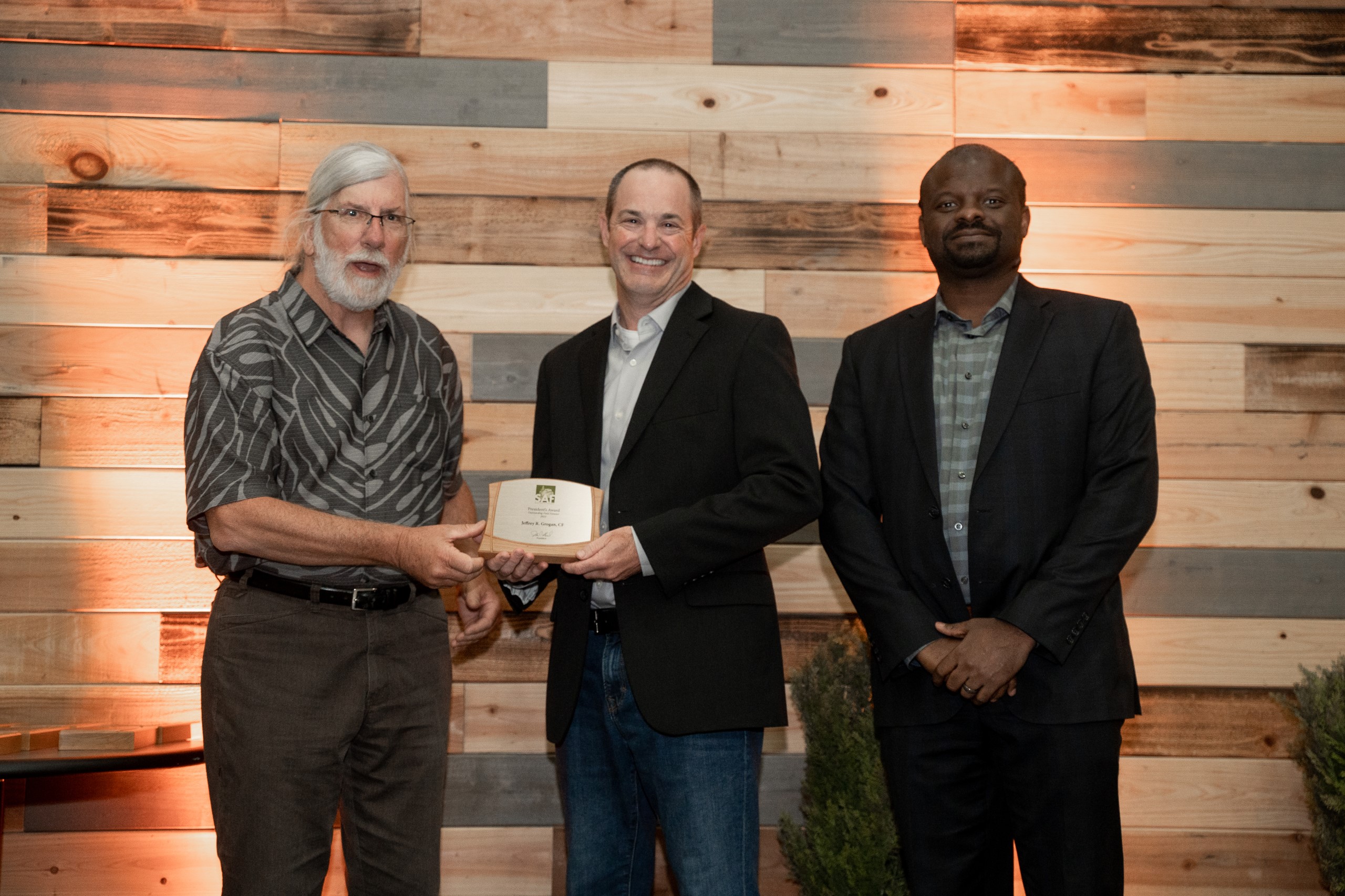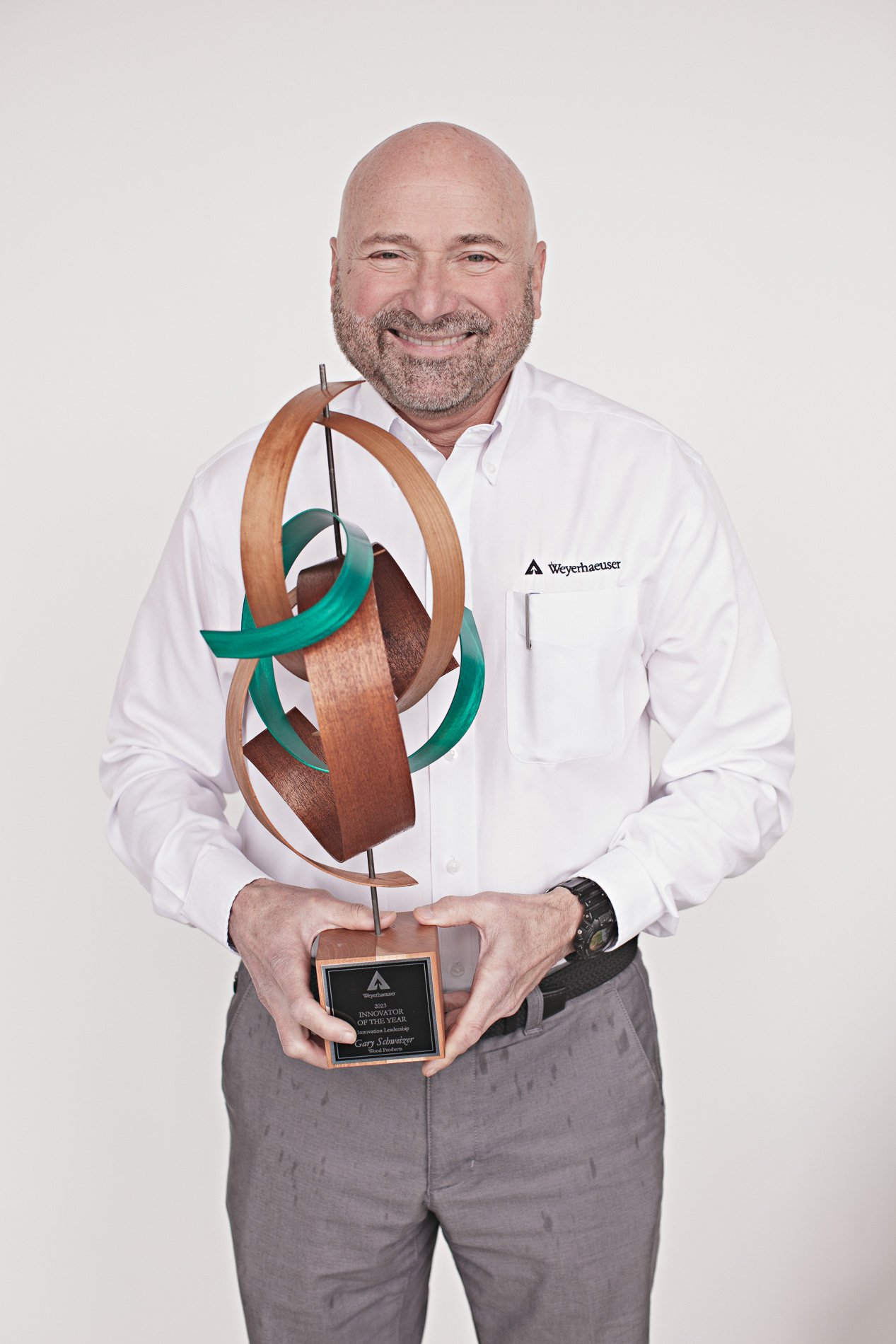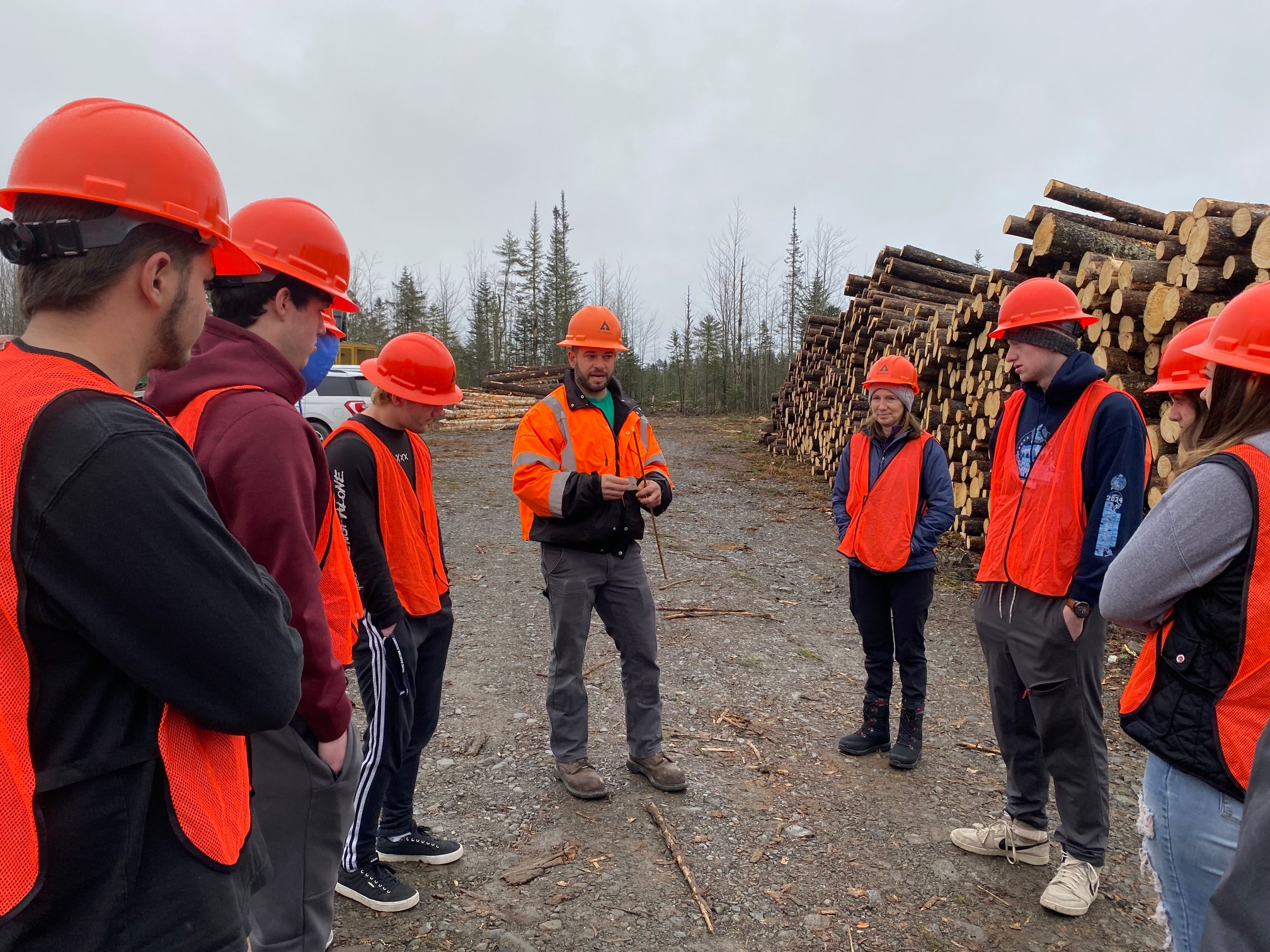
Jeff Grogan receives a 2022 Presidential Field Forester Award at the Society of American Foresters’ annual meeting in Baltimore, Maryland, from SAF president John Maisch, left, and SAF CEO Terry Baker. The award honors foresters who have dedicated their careers to advancing forestry through sound scientific methods and adaptive management strategies.
Jeff Grogan sees himself as a bridge between traditional forestry and emerging technologies in the field. Well-versed in GIS, databases and distilling data for field foresters — but just as proficient in the woods — his hybrid skillset gets noticed by his colleagues, peers and industry trade associations.
In fact, the Oregon state chapter of the Society of American Foresters selected him as its 2020 Forester of the Year. And the SAF national organization named him a 2022 Presidential Field Forester, one of its highest honors.
Jeff, who has been a forest planner in our Southern Oregon Timberlands region since 2017, shrugs off the attention. He prefers fly fishing over talking about himself.
“Of course, it’s a really big honor,” he says about the field forester award. “I was one of 11 people nationwide to receive it. It’s truly humbling to be called out in an industry full of talented, dedicated and passionate people.”
Jeff (right) demonstrates the use of an iPad application for updating stream survey maps in the field. Since beginning his career at Weyerhaeuser in the early 2000s, Jeff has helped advance the use of geographic information systems to improve our ability to make informed forest management and harvest decisions.
USING DATA TO DRIVE DECISIONS
The award recognizes members who have dedicated their careers to using sound scientific methods and adaptive management strategies to improve forestry. Jeff was nominated for identifying ways to make collecting and accessing data in the field more efficient, which helps forest managers make the best possible decisions.
Jeff also played a critical role in using GIS data to help our forestry teams decide where and when to salvage timber damaged during the 2020 Holiday Farm Fire.
“As a forest planner, my role is to help our forest engineers and harvest managers use data to make the best possible harvest decisions,” Jeff says. “We use data to analyze numerous factors, from market demand and costs to environmental considerations.”
Jeff with his SAF award. Since college, Jeff has been an active member of the Society of American Foresters. In the 2000s, he moved into SAF’s leadership ranks, where he headed two local chapters in Oregon before being elected to lead the statewide organization in 2020.
GOING WEST
Jeff’s passion for forestry started in high school while doing conservation work in natural areas around Littleton, Colorado. Before graduating, he had decided to pursue a career in natural resources and applied to Oregon State University, where he majored in forest management.
“I had no connection to the Pacific Northwest, except that my parents had spent some time in Seattle and loved it,” he says. “Except for a brief time back in Denver, I’ve been out here ever since.”
By the time he graduated, Jeff had also fallen in love with the Pacific Northwest. He had also come to love data and data management. He caught the tech bug doing forest inventories during summer internships in college and continued that work after earning his degree.
“For a time, I was a research assistant for an OSU research study on spotted owls, responsible for surveying and cataloging old-growth forests in southwest Oregon,” he says.
After that work ended, he spent a few years in various seasonal jobs as he looked for full-time positions in the forestry industry. During this time, he leaned on SAF to keep up with industry best practices.
“I joined the student chapter of SAF in college,” Jeff says. “I didn’t know it then, but SAF would be a big part of my life and career for the next three decades.”
The trade association also helped him manage through a difficult period in the late 1990s when he found his forestry career at a crossroads.
Jeff flyfishes for brown trout in the Montana backcountry.
SPECIALIZING IN TECH
“I was still looking for full-time work,” he says, “and decided to move back to Denver. But SAF kept me motivated and connected, so I never gave up on my dream.”
In Denver, Jeff made a decision that transformed his career trajectory. While working in urban forestry for the city during the day, he went to night school and studied geographic information systems, or GIS, at the University of Denver.
GIS is often used in forestry to store, access, analyze and map complex information, including tree species, age, density and volume, and allows foresters to layer other critical data — from soil types to habitats for threatened and endangered animals and plants — on top of that information.
And while GIS had been used in forestry for years, in the early 2000s it was poised for exponential growth as the technology moved from mainframe and dedicated workstation computers to increasingly powerful desktop, laptop and mobile devices that allowed GIS to integrate into daily work.
JOINING THE BIG W
Jeff landed a job doing GIS work for Willamette in Seaside, Oregon, just before its acquisition by Weyerhaeuser in 2002. He was tasked with maintaining a forest inventory database on 195,0000 acres, and his work ranged from field surveys to system administration and data maintenance.
“The graphics and user interfaces weren’t what they are today,” Jeff says. “Back then the work involved a lot of line coding and custom applications.”
Jeff became a GIS field forester in 2009, responsible for coordinating with leaders, research and development and his forestry peers on our forest inventory data collection system, and also for implementing mobile GIS technologies and best practices in the field. Then, in 2014, he moved into new group in IT, where he held responsibilities specifically for mobile technology adoption for our Timberlands business.
“The work I contributed to in that group set the stage for the mobile GIS platform we use today,” he says.
ADVANCING FORESTRY THROUGH SAF
As Jeff progressed in his career at Weyerhaeuser, he was also progressing up the ranks of SAF, where he continued to be actively involved. He headed two different local chapters for a time, one in Seaside and one in Eugene. In 2020, his peers elected him the member-leader of the state organization.
“At the local level, volunteer leaders are responsible for planning meetings, finding speakers, recruiting new members, and generally making SAF a go-to resource for networking and sharing industry best practices,” Jeff says. “At the state level, I led the organization through the COVID-19 pandemic. Our focus was finding new ways to keep members engaged and active.”
Jeff says he’s grateful to be able to give back to SAF and appreciates how his colleagues, supervisors and others encouraged him to stay involved over the years.
“Weyerhaeuser has been such a great long-term supporter of SAF,” Jeff says. “It’s a great organization for anyone in natural resources who wants to work on both professional growth and advancing the industry."


